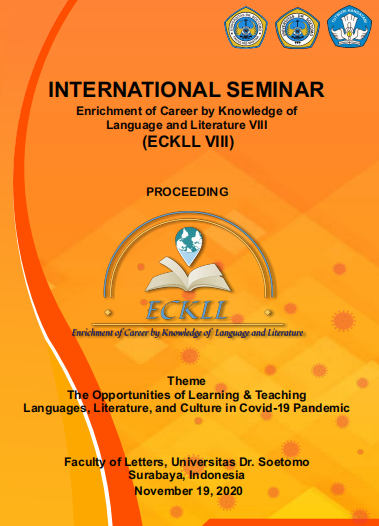The intent, Meaning, and Discourse Context ahead of the 2019 PILPRES: Forensic Linguistic Study in the Case of Spreading Fake News
 Abstract views: 234
,
Abstract views: 234
,
 PDF downloads: 59
PDF downloads: 59
Abstract
This qualitative descriptive study has the general aims of analyzing the intent, meaning, and context of discourse in the case of spreading fake news which is one of the elements in the regulation of the articles of the Indonesia Government Regulation Number 11 of 2008 concerning Electronic Information and Transactions (ITE). The results of the semantic theory analysis will then be used in the development of Forensic Linguistics course material. The variables used in this study were three things, namely the intent, meaning, and context of article regulation in the ITE Law, and the morphological processes (affixation and abbreviation) contained in the utterance of criminal cases to spread fake news (hoax). The meaning of verbs studied in this study rests on the lexical field or the distinctive feature of words or verbal expressions that have a predicate function. The data collection techniques carried out were: 1) the data provision stage, 2) the data analysis stage (with the equivalent method and the different method), and 3) the presentation of the results of the analysis of primary data in the form of
verbs in utterances which became material in criminal cases of spreading fake news purposive sampling. The results showed that the grammatical category of the verb spreading in article 28 paragraph (1) arrangement based on its syntactic structure is an active diathesis verb and is characterized morphologically by affixation in the form of the prefix meN-, has an inherently 'deliberate' semantic characteristic, as well as the role of instrument agent 'with the technological
tools‘ and whoever's agent coverage. The predicate of verbs that have the potential to be criminalized for spreading fake news (hoax) was found in a number of news containing simulfix (meN-kan), a monomorphemic form, namely keluarkan, dibawa, and diberi. As for the passive diathesis that is found is keluarkan,
dibawa, diberi, dukung, and dijuluki. Based on the mode, the news was found that had a declarative and interrogative mode, with original affixes that came from
Indonesian.







